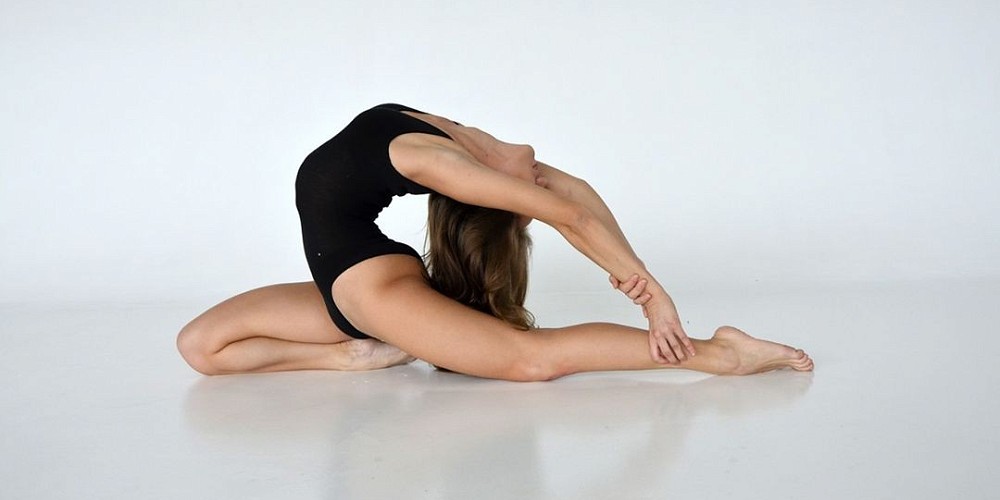Running Without Injury: Risk Factors & Injury Management
Article by Lisa Purzner
Understand the risk factors associated with running and you’ll be able to hit the ground running while staying injury-free!

Running is one of the most accessible and least expensive forms of physical activity – all you need is a pair of shoes and a road, sidewalk or trail.
The arrival of warm weather often coincides with an increased number of people starting a running program or ramping up their training for various races and events.
Health Benefits of Running
The health benefits associated with running are numerous:
- Increased aerobic capacity (VO2 max) (1)
- Improved cardiovascular fitness (1) (decreased resting heart rate),
- Weight management (1)
- Increased bone mineral density (2)
- Improved blood markers (1) (decreased triglycerides and HDL cholesterol)
Rate of Injury Among Runners
Despite all of these health benefits, the rate of injury is quite high, especially among novice runners; a recent systematic review of running-related injuries in novice runners found an incidence of 30 injuries per 1000 hours of running (3).
This may be attributable to the fact that most injuries occur as a result of overuse, the excessive overloading muscles and tendons (3).
Common Running Related Injuries
The most common injuries are:
- Medial tibial stress syndrome (shin splints)
- Achilles tendinopathy
- Plantar fasciitis
- Patellofemoral syndrome (3)
There is a lack of consensus in the literature about the definition of a running-related injury (3). However, most studies describe running-related injuries as self-reported pain or discomfort in the lower extremities or lower back that is caused by or associated with running and has caused a reduction in running volume, frequency or intensity (3).
Regardless of whether you are thinking about dusting off your old runners for a 5k race or if you are a seasoned ultra-marathoner, it is important to understand the risk factors for sustaining an injury, how to manage your injuries, when to seek guidance from a healthcare professional and most importantly, how to prevent injuries from occurring in the first place.
Risk Factors for Running-Related Injuries
Novice Runners (4)
- A study from the Netherlands on novice runners starting a running program found that almost 50% of participants sustained a running-related injury in the 52-week follow-up period (4)
- Injuries tend to persist longer in novice runners compared to more experienced runners (4)
Runners with a Previous Running-Related Injury (4)
- Some runners may not achieve a full recovery from a prior injury before resuming training and sustaining a new injury
- Frequently injured runners may be susceptible to training errors or poor running biomechanics that exacerbate an old injury or cause a new running-related injury (4)
Gender (5)
- Females may be at a slightly increased risk of specific injuries to the knee and shin, due to an increased Q angle (increased knee valgus) (5)
- However, there is a lack of strong evidence indicating that one sex is at a higher risk of injury (5)
Training Errors (5)
- Runners with a high training frequency and/or running distance are more susceptible to overuse injuries (5)
- The injury rate is amplified amongst two particular groups: runners with no running experience and experienced long-distance runners (5)
Use of Orthotics or Inserts (5)
- A recent systematic review found that runners wearing orthotics or inserts were at a greater risk for injury, and that orthotics do not appear to correct biomechanical deficiencies in running (5)
Management of Running-Related Injuries
Unload the Injured Area
- Depending on the specific injury, it may be possible to continue running with decreased intensity, duration and/or frequency
- During the acute phase of an injury, runners can maintain cardiovascular fitness by cycling, swimming, walking and using the elliptical
Address the Underlying Cause of Injury
- A knowledgeable health care professional, such as a physiotherapist, can perform a comprehensive assessment and develop a treatment plan, including home exercises to correct muscle imbalances
Slowly Reload the Tissue
- Initiate a gradual return to running when able to do so
What Is The Role Of Physiotherapy In All This?
Prevent Future Injuries
- Running is a load bearing activity and it is important to learn how to run with proper technique if you are new to the sport
- Identify and correct muscle imbalances with home exercises and hands-on treatment, including manual therapy, soft tissue release, shockwave therapy, dry needling and acupuncture
- Assessment of previous injuries or current aches and pains that could progress into a full-blown injury
Manage Ongoing Injuries
- Comprehensive assessment of injured area(s) and areas above and below the injury site, as well as a biomechanical assessment of running technique
- Analysis of training factors (e.g. running duration, frequency, intensity, surface type, footwear)
- Correction of muscle imbalances through home exercises
- Decrease inflammation, accelerate healing and improve tissue mobility with manual therapy, soft tissue release, shockwave therapy, dry needling, acupuncture, ultrasound and taping
Facilitate Your Return to Running
- Guidance on how to modify current training program based on intensity, duration and frequency, or gradually resume running when safe to do so
Improve Your Running Economy and Performance
- Incorporate plyometrics and strengthening into the training program
- In a study conducted on well-trained male distance runners, 8 weeks of combined heavy resistance (e.g. 5-6 repetitions of back squats, Bulgarian squats, Romanian deadlifts) and plyometric training (e.g. drop jump, single leg hop, double leg hurdle hop) within a single session resulted in improved strength and power performance, running economy, maximal sprint speed and 5 km running performance (6)
What Can YOU Do To Prevent Injury?
- Pay attention to your body and monitor yourself for early signs of an overuse injury:
- Pain or unusual discomfort during or after running that affects how you are running
- Achy pain at night
- Abnormal tenderness around joints or tendon attachments
- Swelling, warmth, redness around joints or tendons
- Decrease running intensity, followed by duration and frequency, if necessary, to allow symptoms to resolve
- Perform strength and mobility exercises regularly to maintain or improve range of motion, flexibility and strength
References
- Hespanhol, L.C., Pillay, J.D., van Mechelen, W., Verhagen, E. Meta-Analyses of the Effects of Habitual Running on Indices of Health in Physically Inactive Adults. Sports Med (2015); 45:1455-1468.
- Scofield, K.L., Hecht, S. Bone Health in Endurance Athletes: Runners, Cyclists, and Swimmers. Current Sports Medicine Reports (2012); 11(6):328-34.
- Lopes, A., Hespanhol, L.C., Yeung, S.S., Costa, L.O.P. What Are The Main Running-Related Musculoskeletal Injuries? A Systematic Review. Sports Med (2012); 42(10): 891-905.
- Fokkemaa, T., Burggraaffa, R., Hartgensb, F., Kluitenbergc, B., Verhagend, E., Backxe, F.J.G., van der Worpc, H., Bierma-Zeinstraa, S.M.A., Koesa, B.W., van Middelkoopa, M. Prognosis and prognostic factors of running-related injuries in novice runners: A prospective cohort study. Journal of Science and Medicine in Sport. 22(2019), 259-263.
- van der Worp M.P., ten Haaf D.S.M., van Cingel R., de Wijer A., Nijhuis-van der Sanden M.W.G., Staal J.B. (2015) Injuries in Runners: A Systematic Review on Risk Factors and Sex Differences. PLoS ONE 10(2): e0114937. doi:10.1371/journal. pone.0114937
- Li F, Wang R, Newton RU, Sutton D, Shi Y, Ding H. 2019. Effects of complex training versus heavy resistance training on neuromuscular adaptation, running economy and 5-km performance in well-trained distance runners. PeerJ 7:e6787. http://doi.org/10.7717/peerj.6787
You May Also Like...
-
 ArticleView Post
ArticleView PostUnderstanding Hypermobility
While some individuals may naturally possess hypermobile joints without adverse effects, others may experience symptoms that require attention.
-
 ArticleView Post
ArticleView PostTruth, Reconciliation, and the Medicine Wheel
Feeling disconnected from your ideal health? Learn how to regain your holistic health and well-being.
-
 ArticleView Post
ArticleView PostPhysiotherapy for Temporomandibular Disorders (TMD)
Do you clench your jaw, grind your teeth or bite your nails? Does this lead to clicking, cracking, locking or pain in your jaw? Physiotherapy may be able to help!